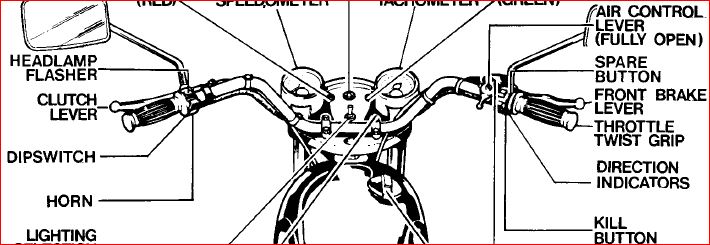- Joined
- Jan 1, 2024
- Messages
- 133
I've just posted about my recent purchase of a 1973 750 Hi-Rider. I've got it in the shop, up on my lift and am starting some preliminary troubleshooting of a no spark issue. Have pulled up a wiring diagram from this forum and have to ask, am I reading these diagrams wrong or do these bikes have a positve ground, and do they, in fact have a 12 volt system? Help please.

